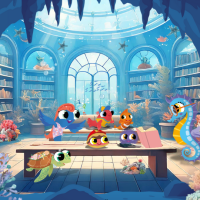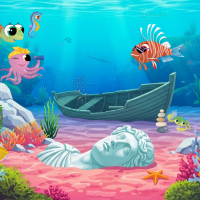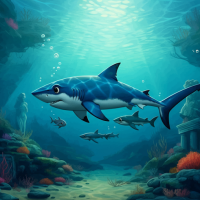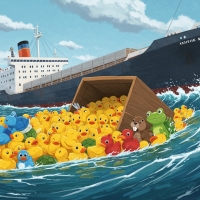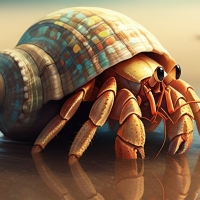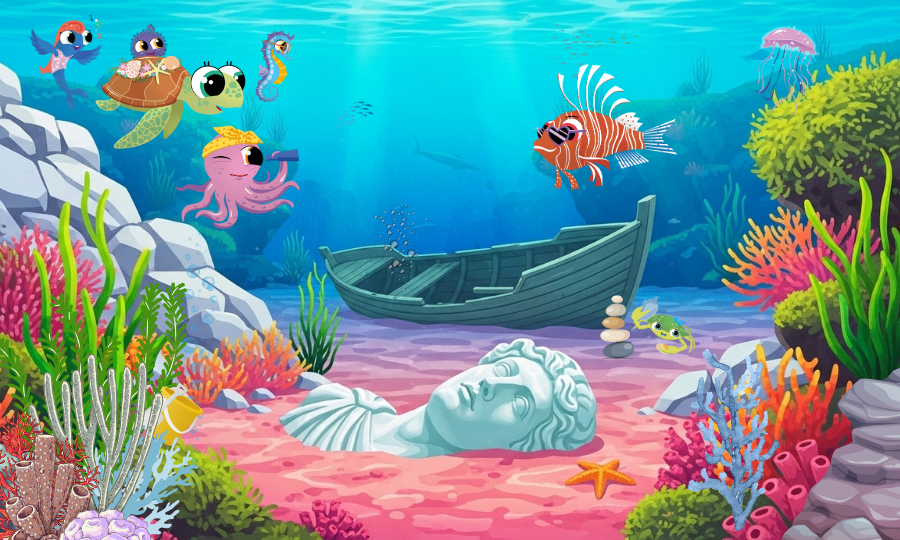
Meet Leon the Lionfish: Our Fancy New Neighbour
In the underwater world of Bubble Buddies Bay, there’s a new arrival: Leon, the Lionfish. He’s not from around here. He comes from the warm waters of the Indo-Pacific Ocean.
Leon is a show-off in the best way. He loves to tell silly jokes and sometimes stirs up a little trouble. He can be a bit of a bully, but we always keep a close eye on him. After all, he’s no ordinary fish; scientists are still learning new things about him every day!
![]()
What Makes Leon So Special
Lionfish are called the kings and queens of the coral reef, and it’s easy to see why. They look like royalty underwater. Leon swims with long, flowing fins that look like a lion's mane!
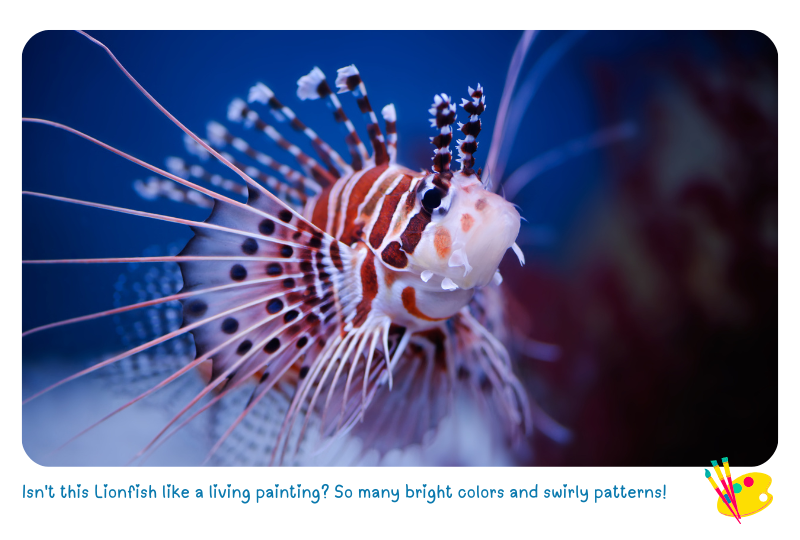
But Leon’s showy look isn’t for fun; it is a warning. He has 18 venomous spines on his top, bottom, and side fins. Venomous means he can deliver a sting that hurts. These spines help keep predators away. If anyone ever gets stung, tell an adult right away, they’ll know to get help and use hot water to ease the pain. So, while Leon is beautiful, it’s best to admire him from a safe distance.
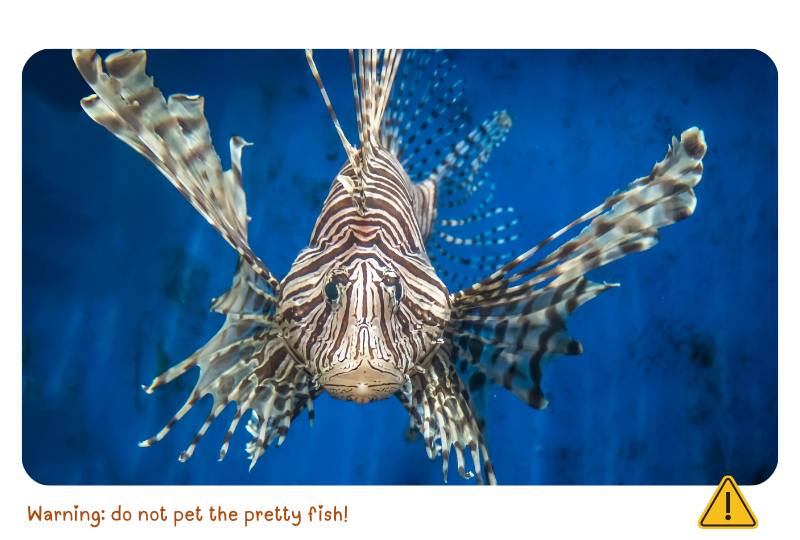
Leon is a master hunter. He is what scientists call an ambush predator. That means he waits still and strikes at the right moment. His big, curtain-like fins help him sneak up on smaller fish and herd them into a corner. Then, with a quick gulp, he swallows them whole.
Leon has a mouth shaped like a straw or vacuum hose. Sometimes, he even blows little jets of water at his prey to confuse them before swooping in. And his stomach? It can stretch up to 30 times its normal size to hold all the fish he eats. He may not look dangerous at first glance, but Lionfish are some of the most successful hunters in the sea.
Fighting and Dancing
Life isn’t all hunting and swimming for Leon. Sometimes, he has to stand his ground. Male lionfish are known to defend their space fiercely. If another male swims too close, they might charge with their spines pointed forward.
But Leon has a gentler side too. During the breeding season, males put on an elegant courtship dance to impress females. They swim together in circles, wave their fins in fancy patterns, and move in perfect rhythm. If the female is impressed, she lays a clutch of eggs; sometimes as many as 15,000 at a time.
Baby lionfish grow up quickly. In 18 months, they’re full-grown and ready to start their own adventures.
Leon the Explorer
Lionfish are excellent explorers. They can live in coral reefs, seagrass beds, and even around old sunken ships. While they started out in the Indo-Pacific, lionfish are now living in the Atlantic Ocean, the Caribbean Sea, and even the Mediterranean Sea.
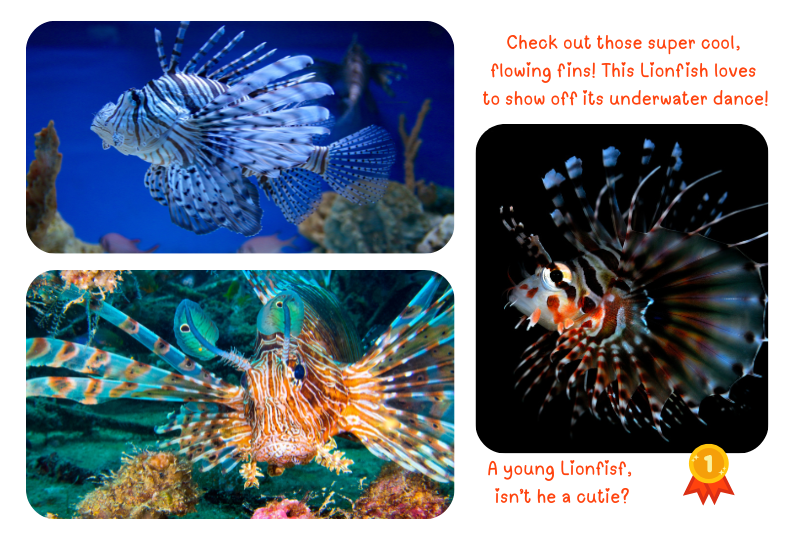
Some scientists believe they reached the Mediterranean through the Suez Canal; a man-made waterway that connects the Red Sea to the Mediterranean. Surprisingly, they have been discovered in colder regions considered too cold for them.
![]()
A Newcomer with a Big Impact
Here’s something important to know about lionfish: they can have a big impact on the places they move to. That’s because lionfish grow quickly, eat a lot, and can lay thousands of eggs every year.
When a new animal moves into an environment and starts causing problems for the local creatures, scientists call it an invasive species. Because lionfish don’t have many natural predators in their new homes, they can take over and eat too many smaller fish. This can upset the balance of the reef and make life harder for other ocean animals.
That’s why ocean scientists are keeping a close eye on Leon and his friends. They want to learn how to protect the underwater ecosystems while still finding a way to live alongside these beautiful newcomers.
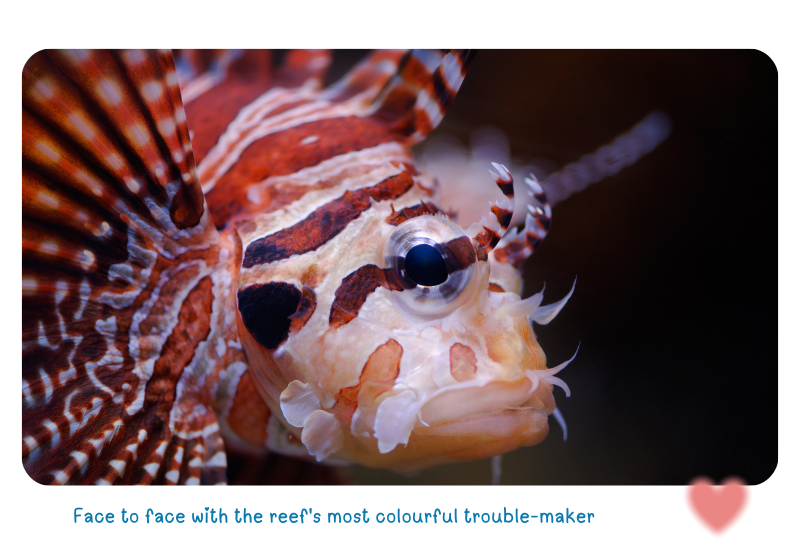
What We Can Learn from Leon
Leon may be flashy, clever, and a little full of himself, but he teaches us an important lesson. Every creature plays a role in its environment. When new animals move in, it’s important to learn how they live, what they need, and how they affect their new home.
![]()
Here are some fun activities for you!
🦈 Colour Me Lionfish! Draw your own lionfish! Use this article to help you remember what Leon should look like:
- Wavy, fan-like fins
- Bold stripes
- Bright warning colours
- A long snout
- Don’t forget those 18 spines!
Add other sea creatures around Lion to create your own underwater scene in Bubble Buddies Bay. Or you can download a drawing from the Printables page! Want to show off your drawing? Ask a grown-up to send it to us, we’d love to see your Leon!
🐟 Super Sneaky Hunting Game. Play this with a friend or in a group:
- One person is the Lionfish.
- Everyone else is a little fish.
- The Lionfish must stand still, waiting to attack.
- When someone moves close, the Lionfish jumps forward and says, “Gulp!”
- The little fish must freeze! If they move, they join the Lionfish team.
This game shows how lionfish wait patiently to ambush their prey.
🐡 Where in the World? Grab a world map or globe (or download and print it from the Printables page) and find these places:
- Indo-Pacific Ocean (where Lionfish come from)
- Atlantic Ocean
- Caribbean Sea
- Mediterranean Sea
- The Suez Canal (hint: it’s between Egypt and the Middle East)
Mark where lionfish live now and draw arrows showing how they might have travelled!
That’s a wrap, see you next tide!
Sophia the Seahorse


